JIMI HENDRIX / “Like A Rolling Stone”
September of 1964 I was going to school at Carleton College in Northfield, Minnesota (but only for a hot minute—by April ’65 I was gone). Little Bobby Zimmerman is from Minnesota. Folk singing was happening. I ran into a good number of folkies at Carleton. I was a blues neophyte. At that time I liked John Lee Hooker and Lightin’ Hopkins, Mississippi John Hurt and even a little Skip James, and, of course, Taj Mahal.
Taj Mahal was the only young man among the bunch of blues references. The only one who was college educated. The only one who even remotely seem to have any commonalities with the folk singers at Carleton who were, to a man, young, white and of questionable singing abilities, except for one guy who was a senior and had that weather-beaten look and laconic terseness we associate with Texas songsters. Think Willie Nelson. All of the singers of note seemed to be male although there was a gaggle of female camp followers and even a few had that plaintive, long-haired, hang-dog looking, Joan Baez air about themselves. Come to think of it, there was even one who had the Janis Joplin thing going.
Of course I’m relying on hazy memory that is probably as reliable as a George Bush speech. I believe what I’m saying but I’m also confident that some (maybe even a lot) of the details don’t exactly match up. But anyway, my point is, I was around when Bob Dylan was “the” musical icon for white youth.
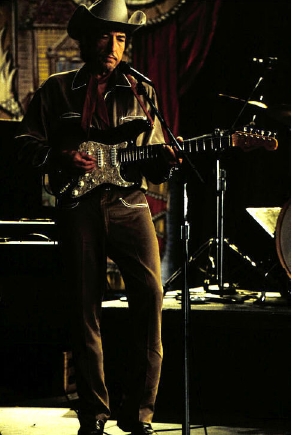
I was influenced by Bob Dylan even though I was a Minnesota collegiate for far less than a year. (I made my getaway as soon as the weather broke, which was not until late, late March, might-as-well-say April.) How influenced? Well, I remember owning—I believe—two of his albums. I never could listen to either one all the way through although as a then budding poet and prose writer, I really did enjoy reading the lyrics on the back of the record covers. But you know then came Black Power, Jimi Hendrix, P-Funk, Soul, Stax (especially WattStax), full out soul music, James Brown, a military stint in Korea and Texas, etc. etc. Plus, most important of all, a life sustaining (and life sustained) love of jazz.
As Mtume noted: Bob Dylan can’t sing. By the time I was back in the world there was no earthly reason for me to listen to Bob Dylan mumble, stumble and scowl his way through songs, not even songs as beautifully written as many of his were.
This preamble/ramble sets up my 17-deep mixtape of Bob Dylan covers. The one odd fact is that I did not include any jazz covers (and yes there were some). I decided to concentrate on vocalists. Ok? So here goes.
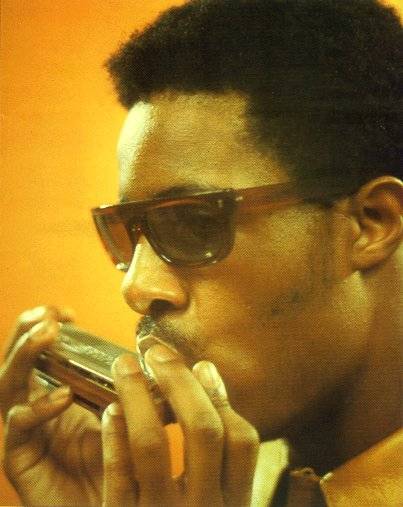
We open with Stevie Wonder doing “Blowin’ In The Wind” taken from Bob Dylan The 30th Anniversary Concert Celebration. Stevie’s spoken introduction insightfully contextualizes the song. Back in the day Dylan was known as a “protest” singer/songwriter. Stevie had a minor hit with this one as a young teenager. At six seconds shy of nine minutes it’s an understatement to say this a long version of a short song but Stevie pulls it off.
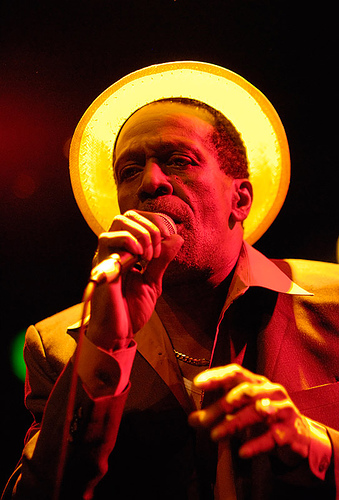
Reggae “Cool Ruler” Gregory Isaacs slides in with a sensuous reading of “Mr. Tambourine Man” complete with harmonica flourishes. I have no idea of how Isaacs connects to the lyrics but Isaacs makes it sound so natural. Isaacs convinces that he feels the importance of the poetic lyrics. As a concept, reggae versions of Dylan songs would seem to be an odd fit but, hey, never underestimate the ability of Jamaica to make everything (anything) irie.
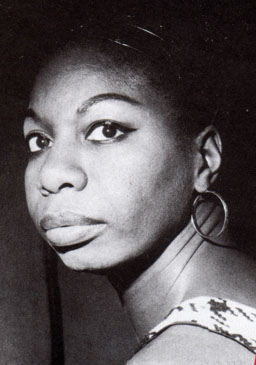
“Just Like Tom Thumb Blues” by Nina Simone in her folksy bag is strikingly beautiful. Sotto-voiced, Simone sensitively stretches syllables, injecting heavy emotion into a reading that easily could have veered off into an uninspired drone. In keeping with the narrative of the lyrics, Ms. Simone sounds like she is writing her memoirs, late at night with a chilled glass of wine and a penchant for truth telling. When is a whisper louder than a roar? When Nina gets down like this. In my mind I am transfixed by her famously hypnotizing stare. Her eyes wide open, peering without sentiment into a hard past and ending the hypothetical tale with the painful revelation:
The joke was on me
There was no one there even to bluff
I’m going back to New York City
I do believe I’ve had enough
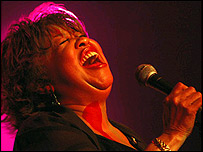
Mavis Staples, another truth-teller, also singing in an understated manner, follows Nina. Mavis runs the realist line: irrespective of who who you are or what you do, “You Gotta Serve Somebody.” Mavis is a gritty, Mississippi-born, Chicago-reared gospel-based neo-blues artist most often presented as a Soul singer. But like an earlier generation of street-singing gospel and blues bards, Mavis really is a purveyor of life-based aphorisms and morality tales. She tells it like it “T-I-Is” (i.e. old-school Black vernacular for unsentimental declarations of social reality). It doesn’t hurt that Dylan offers refreshingly frank mini-portraits of diverse characters that span the range of social characters. But ultimately it’s Mavis beautiful voice and impeccable phrasing that makes the finger-snapping interpretation so moving.
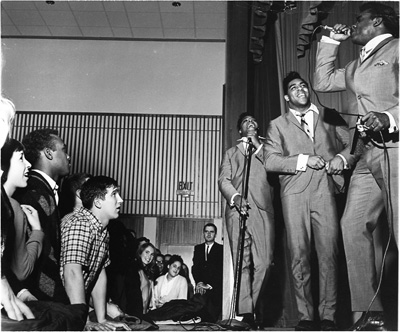
On the other hand, who consistently does romance better than The Isley Brothers? That’s like asking how much is one plus one. These cats have a lock on love songs. They make seduction (Lay, lady lay / Lay across my big brass bed) sound not only inviting and inevitable but also sincerely spiritual. Or like the lyric says and the Isley successful emote: “you can have your cake and eat it too.” Wow. Who doesn’t want that? “Lay Lady Lay” along with thirteen other equally effective soft songs are contained on an Isley Brothers collection called Beautiful Ballads.
Nina returns for a song that seems written for her. “The Times Are-A-Changing” is uttered as though it were Biblical prophecy. There is a rock-solid aura of certainty girding Ms. Simone’s song-sermon. This version even includes an organ interlude with church bells, just in case you didn’t catch the import of the song.
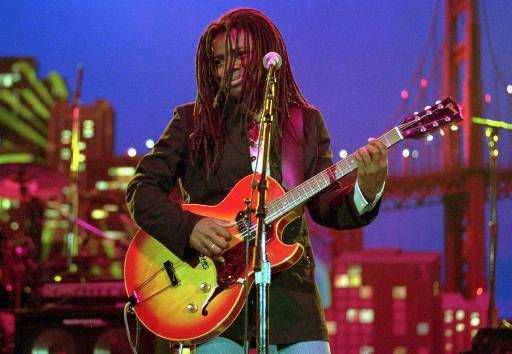
Tracy Chapman follows with her rendition of the same song. Ms. Chapman is the closest we come in recent years to a genuine “folk singer.” Unlike most female folk singers, Tracy has a super-thick sister voice, sort of in the vein of Odetta. Accompanying herself on guitar, Tracy Chpaman has a wonderfully subtle vibrato that leavens what would otherwise be a voice of doom and gloom.
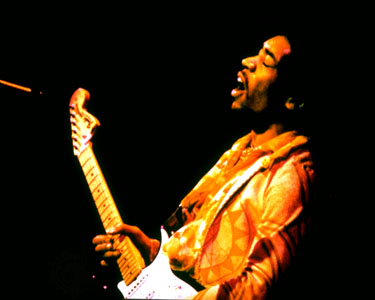
It’s no secret I love Jimi Hendrix. Over in the Classic section, Mtume picked an earlier Jimi Hendrix rendition of “Like A Rolling Stone” but I really, really prefer this stately version. First of all, the song is taken at a slower pace but invested with more dynamics, more turmoil. It’s both softer overall and louder in specific parts. I guess you could say the dynamic range is wider. Moreover, Jimi’s vocal work is more passionate, more confident. He nails the hooks and paces himself with the profound timing of a professional who is never tempted to rush a good thing even when it gets ear-splittingly loud. Check the churning and roiling intensity of the out chorus; on a scale of one to ten, this is a twenty.
I would pick this version as the feature but Mtume has already picked Jimi’s Monterey take as the Classic feature. But then, hey, what the heck, the song is out of print. Maybe there are folks out there like me who would really, really like to be able to play this one loud, loud on a Friday night or a Sunday morning, not to mention all day one lazy Saturday!
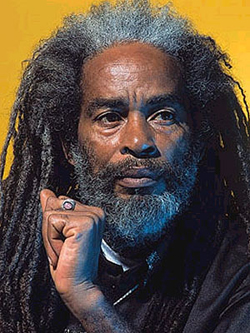
And now it’s back to Jamaica with Max Romeo doing “With God On Our Side.” The song is basically a capsule American history course and would seem to resist a foreign interpretation but Romeo sounds downright homey as a sings down the years. Mtume has already discussed the song’s interior twists and u-turns. Dylan is always good for a subversive riposte. In this case, Bob states that if God is on our side then God will stop the next war. I guess we’re on our own.
Here comes Nina again. This time accompanied folk-song style solely by a guitar as she orates the sad story of Hollis Brown who killed his wife, his five children and himself. But it was not a spur of the moment act. The song lays out how the economic hardships over the years drove him up a cul de sac. Once he hit the wall, his response was sacrifice himself and his family rather than die the desolate death of starvation. The song ends on a note that could be interpreted as either futility or hope, depending on one’s belief system. Counting up the deaths, the narrator tells us somewhere another seven people are born. Typical of Dylan he gives no hint of the conditions under which these new seven people enter the world, nor does Dylan even hint at their future. The Neville Brothers’ ghostly rendition of "The Ballad of Holis Brown" over in the Contemporary section has the stillness of an abandoned farm after-the-fact; Nina’s version reads more like the morning news. It’s unsettling.
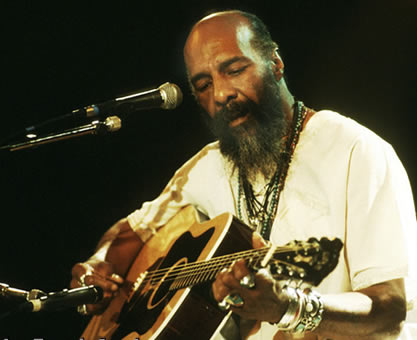
Folksinger Riche Haven kicks off five versions of “Just Like A Woman,” one of Bob Dylan’s signature songs. I’ve never been a fan of Richie Havens; in fact, I used to make fun mimicking his style of singing. Very passionate. Very flat. The rapturous response from the audience undergirds Haven’s popularity as perhaps the most famous male folk singer who happens to be Black. I include Havens because he is so highly respected and offers us a quintessential example of a folk approach to Bob Dylan, which approach is after all the root of Bob Dylan.
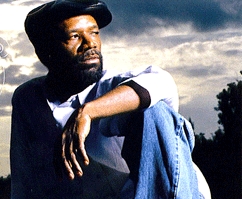
Back to Jamaica with Beres Hammond giving us a lovers rock, sensual version. Note the way Beres caresses the syllables, the ache in his voice like he’s begging even though it’s not a begging song. Though it’s difficult to resist Hammond down-on-one-knee plea, I really, really dig the dub version. Check it out.
And now here is the last of four appearances by Nina Simone. Nina opens with an abstract piano intro before painting a portrait in blue that mixes third-person and first-person narration, which rather than confusing us, actually heightens the veracity of Nina’s telling of the tale. The concluding chorus offers us a sense of Nina’s internal vulnerability, a vulnerability that includes a not usually apparent fragility.
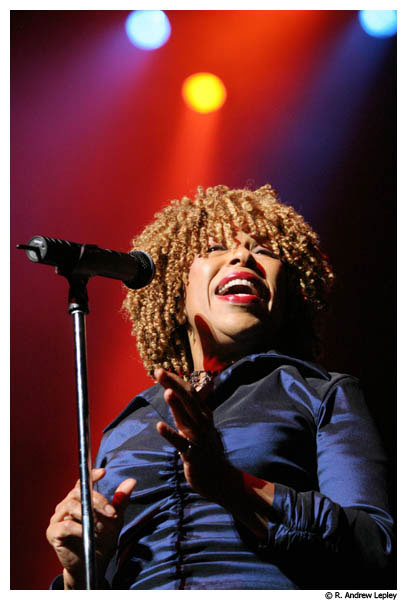
Roberta Flack takes the opposite tack. Whereas Nina Simone sounded like an experienced woman looking backward over her life, Roberta voice floats with the youthfulness of a twenty-something at the end of her first major romantic affair. Another way to put it, Nina’s version is the novel, Roberta offers us the soundtrack to a Hollywood romance—we don’t know whether Nina will love again, we’re confident that love will win out for Roberta, or so it seems listening to the two versions back to back.
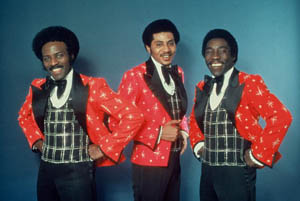
Now here is the screwball of the set. The O’Jays with a little known Dylan song that was the title of their 1991 comeback album, “Emotionally Yours” (although this live version is from the Dylan 30th Anniversary album). The voicing is typical O’Jays, the intertwining of passionate tenor from gravelly-voiced Eddie Lavert with the falsetto and backing voices of his cohorts Walter Williams and Eric Grant. This is perhaps the least recognizable as a Bob Dylan song.
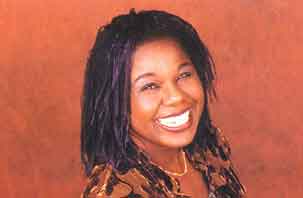
We conclude with a personal favorite, Randy Crawford, the direct heir to Esther Phillips. She has that blues tone in spades, an unmistakable blues vibration resonates through her voice that cuts with the pleasure of a lover’s confident embrace: simultaneously strong and tender, unyielding and yet totally giving. Hers is one of the iconic examples of blues tonality; a tonality that goes both ways, i.e. up and down, and side-to-side, or at least that’s the way the blues people do it.
Randy captures our attention with her assay of Dylan’s famous anti-war song “Knockin’ On Heaven’s Door.” Given the state of the world today, it’s appropriate that we end the Dylan covers with a song that suggests it’s possible that we can end war in our lifetime. It’s time to put our guns into the ground. What a great image.
—Kalamu ya Salaam
Dylan is an awesome, awesome lyricist
I liked some of these covers; but I didn't like most of them. Dylan's lyrics are always so strangely at odds with what one commonly hears in pop. I don't like when people perform Dylan's lyrics without seeming to understand what he's talking about. (And with Dylan, that's pretty easy to do. As much as I like Dylan, I have to admit I'm frequently confused by him too.)
Let's talk about some of the songs. Max Romeo's re-write of "With God On Our Side" is interesting, but the performance itself is pedestrian. Gregory Isaacs' version of "Mr. Tambourine Man" is hilarious. He's singing all the words, but I'd bet half a paycheck he has no idea what he's singing about. (Not that I know either. As I mentioned, Dylan is often inscrutable and "Mr. Tambourine Man" is certainly one of those times. I'm sure some institution of higher learning somewhere has a class named Dylan Lyrics Present and Past. I'd love to take it.)
Stevie is a great, great musician and songwriter. One of the few who might legitimately be called a genius of song. But here, Stevie was way into that period where he played so carefully, so unwilling to make mistakes, that it's just boring. Stevie, circa Fullingness' First Finale or Talking Book often played fat, funky, hot chords and sloppy, powerful rhythms, stuff that makes your woofer cones do weird things, stuff that makes you wonder (no pun) how he ever came up with such strangeness in the first place. But by the nineties, Stevie had become a walking, talking museum piece. Boooooooring.
Nina Simone. What can I say? Sometimes, I embarass myself by liking Nina so much. Let me tell you how skilled Nina is as an intepreter of song. When Nina sings, "I'm going back to New York City / I do believe I've had enough," I'm sitting there, thinking, "Yeah, Nina. Go on back. You don't have to put up with all this madness. What are you doing in Mexico anyway?" And frankly, I don't know what the hell "Just Like Tom Thumb's Blues" blues is about. I don't even know what the title means. My point is, when Nina sings, you're drawn into the song, the characters, the situations. You feel yourself drawn into the world of the song even if you're lost, a stranger in that world.
By contrast, as I listen to Mavis Staples sing "Gotta Serve Somebody" or the O'Jays sing "Emotionally Yours," even though I like the lyrics, I don't get into the spirit of the song. It's just people singing and playing. Singing and playing very well, mind you. But when Nina sings (and Jimi too, and both of those Nevilles interpretations), you don't just hear it, you FEEL it.
Now, Ronald Isley is on some other shit. I'm convinced the man is a pimp. Not in the literal sense of one of those detestable scumbags who prostitutes women. I mean it in the metaphorical ghetto sense of a man who has such a way with women that they seem to virtually line up to put themselves at is considerable disposal; a man who talks so sweetly that the heart (not to mention other things) cannot resist; a man who, in matters of romance at least, can get a with murder. I don't know exactly what Dylan had in mind when he penned "Lay, Lady, Lay," but Ronald claims it and remolds it into the one thing he knows best—a seduction theme. On the page, Dylan's lyrics read personally, specifically, even quietly. It reads like one man talking to one woman. It reads like the sort of thing that would be best spoken in a whisper. Ronald gets hold of it and, as pretty as it is, he could be singing it to any of his girls. The 'lady' in Ronald's interpretation is as general as the 'lady' in the original is specific.
One other quick comment: I'm with Kalamu on the Beres Hammond. The song itself is ok, but the dub is really special. It's a keeper.
Anyhow, no matter what either Kalamu or I thinks about any of these interpretations, the one thing I think anyone reading this should take away from this week's songs, is that Bob Dylan is an awesome, awesome lyricist and craftsman of song. Other than the great Joan Armatrading and maybe Bob Marley, I can't think of any modern lyricists who measure up to Dylan, no matter the musical genre. If, like me, you can't stand Dylan's singing, and you don't have the time or resources to track down a bunch of Dylan interpreations by other artists, check out one of the books of his transcribed lyrics. They read like poetry, and good poetry at that.
—Mtume ya Salaam
This entry was posted on Monday, February 11th, 2008 at 1:03 am and is filed under Cover. You can follow any responses to this entry through the RSS 2.0 feed. You can leave a response, or trackback from your own site.
One Response to “JIMI HENDRIX / “Like A Rolling Stone””
February 11th, 2008 at 8:30 am
GOTTA SERVE SOMEBODY:THE GOSPEL SONGS OF BOB DYLAN
http://www.gottaservesomebody.com
The best African-American covers of Dylan songs since Jimi Hendrix. –International Herald Tribune
Leave a Reply
| top |